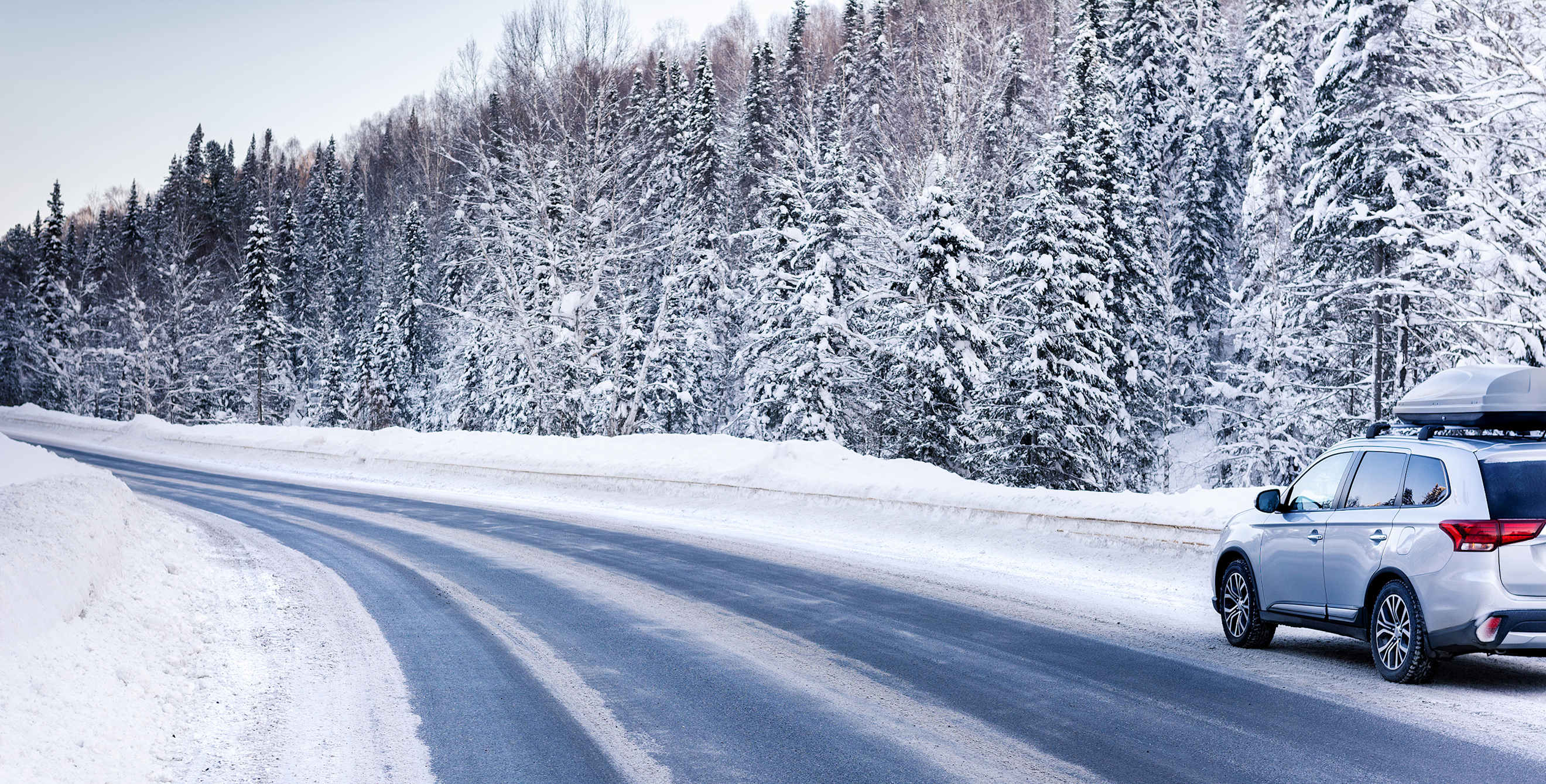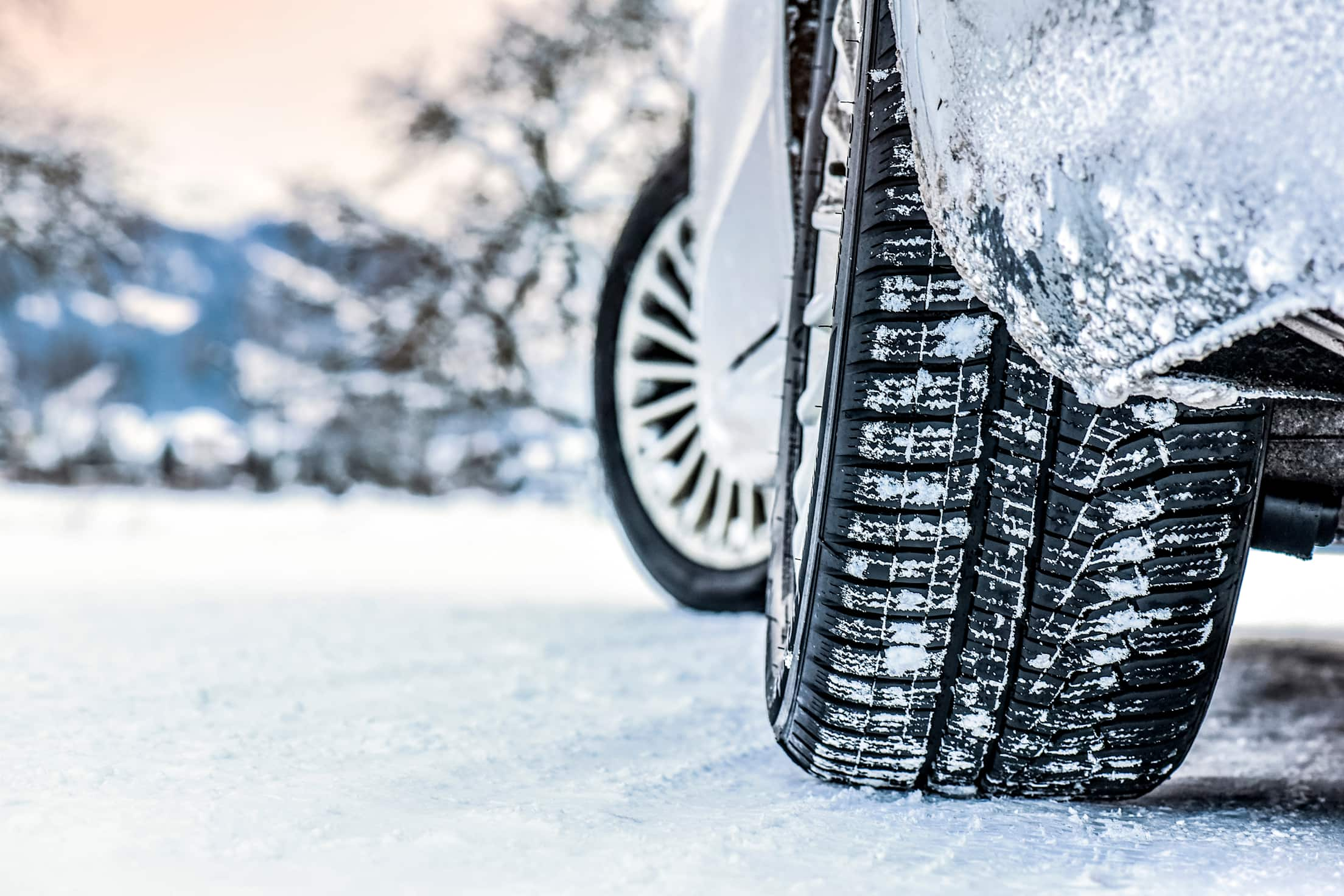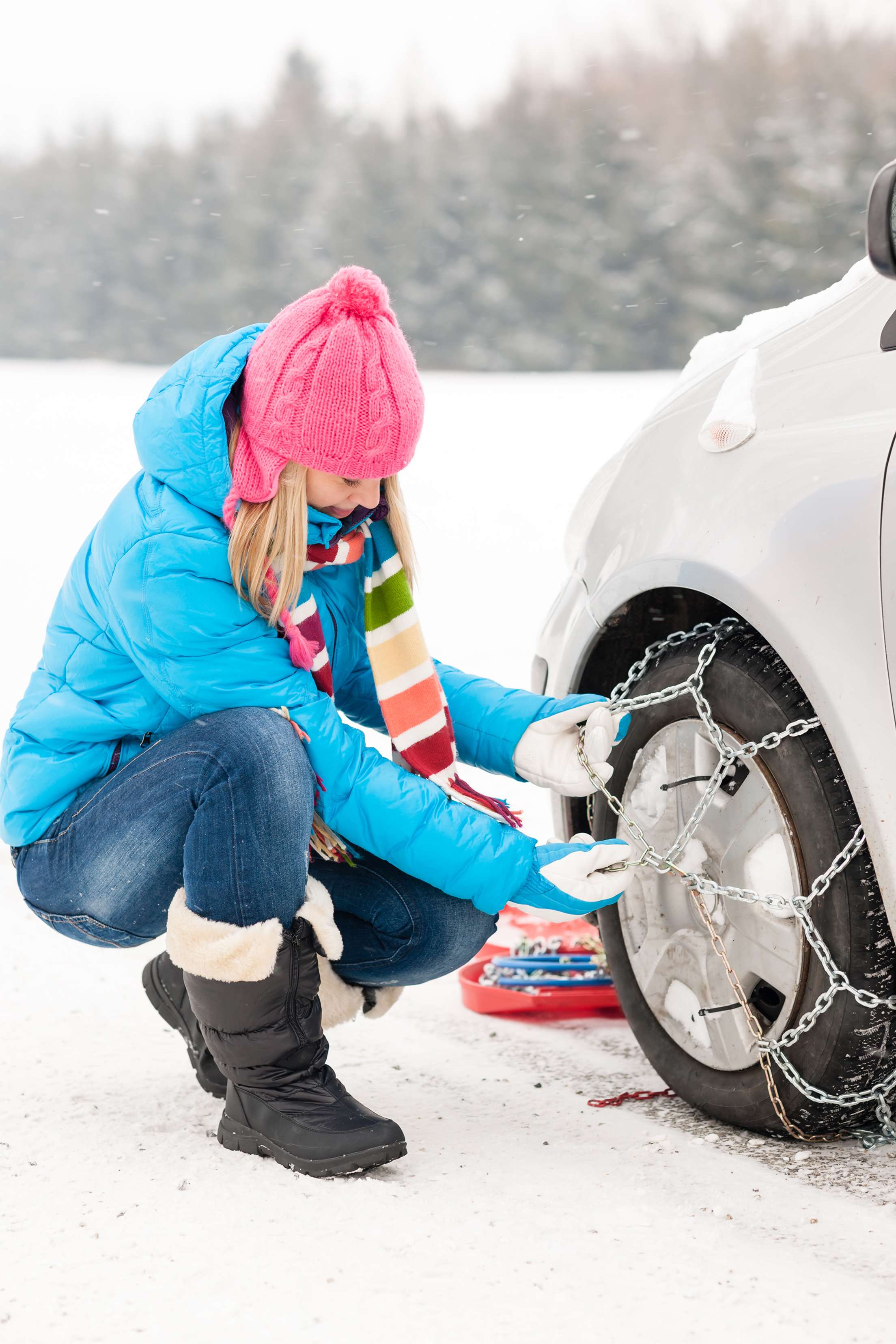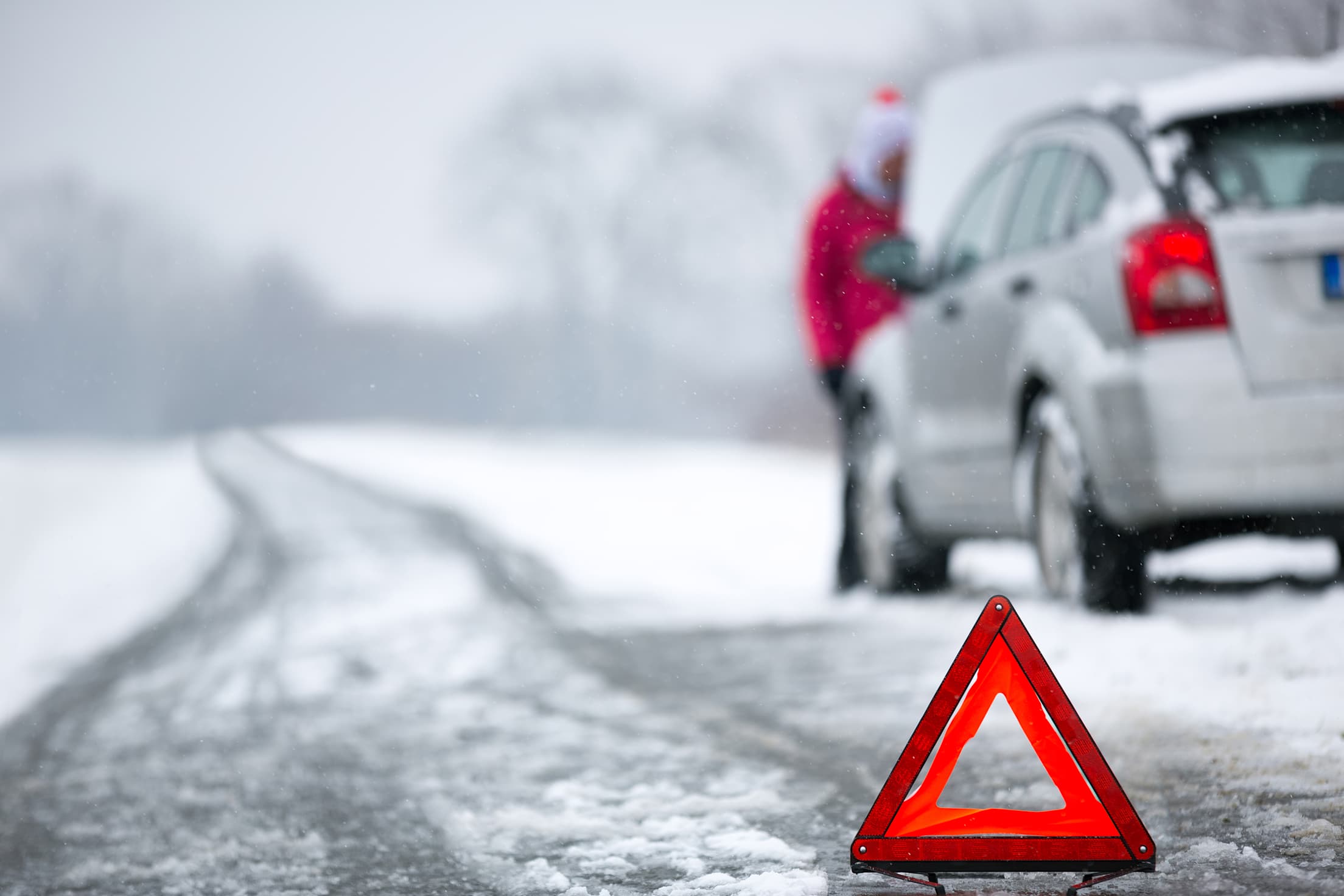
Tips for Driving in the Snow
Snow and ice can be challenging so preparation is key.

You bought a new sled, you’ve unearthed your snow clothes, and you’re ready for the slopes. But don’t forget a critical piece of equipment for navigating the icy landscapes of winter: your vehicle. Preparing your car or truck for cold weather conditions and embracing smart snow-driving practices can save you a lot of hassle and worry. Try these tips to keep you and your passengers safe on the way to and from your favorite snowy playgrounds.
Preparing to Drive in Snowy Conditions
Schedule an inspection—ASAP.
“Waiting until the last minute before a trip to have your vehicle checked is a common mistake,” says Matt Chaney, automotive general manager for AAA Northern California, Nevada, and Utah. Chaney’s customers sometimes drop by his shop for a winter tune-up as little as an hour before they depart for the snow-covered slopes of the Sierra. “They could have bad brakes or the wrong tires, and I have to tell them they probably shouldn’t go. They may head out anyway, in a vehicle that’s not ready for the conditions.” Chaney recommends making an appointment a week before you plan to leave. Your mechanic should check your brakes, wipers, lights, and tires. The heat and defroster should be in good working condition as well.
Consider winter tires.
If you make frequent trips to the snow or live somewhere you expect regular snowfall, changing your tires for the season makes sense. When you do, have them professionally installed and balanced. And make sure they’re the right tires. Karl Stone is an instructor at the Team O'Neil Rally School in New Hampshire, where drivers learn to safely navigate intense winter conditions. “We ask all our students to have winter tires. Not all season tires, but winter tires. All season tires are like a houseboat: not a good house, not a good boat. Get the right tool for the job.”
Check your chains.
The last thing you want is to be stuck on the shoulder without chains, or with chains that don’t fit. Make sure yours are right for your vehicle—and that you know how to install them. Chaney recommends a dry weather test installation in your driveway before you head out. There are dozens of YouTube videos that show how, but start with the instructions on the box or bag. (When you’re done practicing, store those paper instructions in a plastic sleeve with your chains so you can reference them again.) A dry run means you’ll be a lot more confident when it’s time to cross that mountain pass.
Smart Tip: Chain requirements vary by destination, so visit the Department of Transportation website for your destination to find out more. State travel alerts will also tell you where road conditions are problematic and chains are required.

Plan ahead and pack accordingly.
Make sure you’re fueled up before you head into places where conditions are challenging. And refresh your emergency kit for winter travel. In addition to the usual safety items, add some warm blankets, extra water, and all-seasons windshield wiper fluid. A tarp and winter gloves will help keep your clothes and hands dry and warm when you do have to install your chains, and a shovel can help dig you out if you get stuck. Some intrepid drivers even bring old carpets to tuck under the wheels of a stuck car.
“Don’t forget your ice scraper. A few bags of sand can be handy too,” says AJ Seitz. Seitz runs 911 Driving School in Spokane, Washington. “Throw them in the trunk for extra weight over your back tires—this is especially helpful if you’re driving a pickup truck. Plus, you can use the sand for traction if you get stuck.”
Scope weather conditions.
Finally, check the weather along your route and at your destination. Find a local news source and review the road conditions. Common sense and preparation can go a long way, but if there’s extensive ice and/or poor visibility, the best choice may be waiting until conditions are safer.

Driving in the Snow
Slow down and stay focused.
Once you’re on the road, make sure you give plenty of distance between your bumper and the car in front of you. Braking distances can be much longer when traction is reduced. Both Stone and Chaney recommend slowing down—a lot. Seitz agrees, but going too slow can also be a problem. “The road can be completely clear, but some drivers are intimidated by huge snow banks on either side of the roadway. If cars are stacking up behind you, you create a different kind of hazard.”
So, how slow should you go? There’s no hard rule. It comes down to reading the road. Stay in your lane and on its most well-traveled section. Put your phone away and minimize all distractions. It’s important to stay focused.
Sliding? Stay calm.
Keeping your cool in the cold is critical. Staying calm will serve you well if you feel your vehicle start to slide or the tires start to spin.
“When people begin to panic, they slam on the brakes and they turn the wheel hard,” Stone says. Instead, keep your eyes on the road, avoid hitting the brakes, and steer straight. Stone and his fellow instructors teach drivers that where you’re looking while you drive is critical.
“Drivers get fixated on where they’re afraid they’ll end up. A snow bank, a mailbox, a tree, etc.,” says Stone. “Look towards where you want to go. If the car begins to slide, aim your gaze down the center of the road. Looking that direction gives you a fighting chance of getting there.”
Use your brakes with care.
Anti-lock braking systems (ABS) can be tricky when you’re on a slick surface. When ABS activates, the brake pedal kicks back and the system growls. “This can startle some drivers and cause them to release pressure on the pedal,” says Chaney, “which defeats the purpose.” Aim to maintain steady pressure on the brake pedal. If you have ABS, you don’t need to pump the brakes, but Stone suggests gently tapping your brakes as you start down a hill to get a feel for how they behave when there’s no grip.

What if you get stuck in the snow?
If you hit the ice and wind up stuck on the side of the road, you’re safest staying inside your vehicle, especially if there are visibility issues. Call for assistance and wait for help.
Smart Tip: Members can use the AAA Mobile App to request roadside assistance. The app shares your location with the dispatcher and lets you track the tow truck’s location.
If you’re far from the roadway and confident you’re not at risk from other vehicles, you can attempt to dig your car out with a shovel. Dress warmly, wear reflective clothing, and place a reflective emergency marker well in advance of your location to alert others to your presence. Once you’ve cleared around the tires, you can lay down old carpet—if you brought it with you—or use rocks to create traction. Gently rock the car back and forth to free it from the ice and/or snow.
Turning off traction control can help too. In most situations, you don’t want your tires to spin, but if you’re stuck, disabling traction control and spinning your tires might help you dig down through an icy surface to something your vehicle can grip.
Postpone your trip, if you need to.
Snowy conditions are best experienced off the road. If visibility is extremely poor or there’s lots of ice, it may be best to put off your trip until conditions improve. The snow can wait—and you’ll enjoy it much more if you arrive safely.
Count on AAA to have your back in any roadside emergency, no matter the weather.